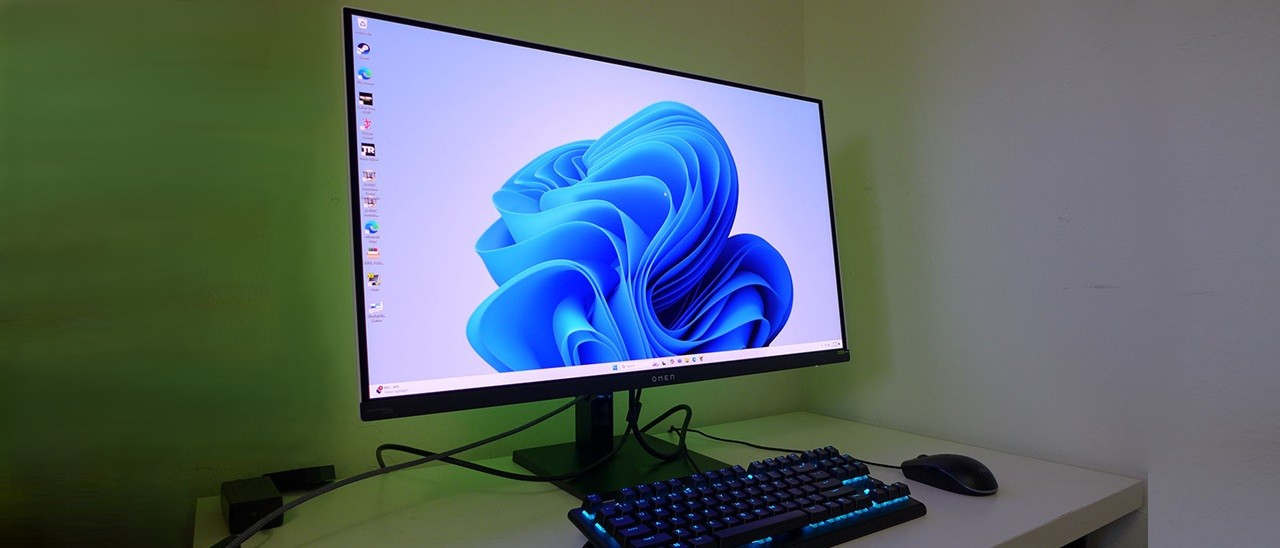Why you can trust Tom's Hardware
My test database has grown slightly in the 4K 240 Hz OLED category. Today’s group includes Acer’s X32 X3, Asus’ PG32UCDP, Aorus FO32U2P, and Alienware’s AW3225QF. To fill the last slot, I put in the fastest available monitor: the Philips’ 27M2N8500, a QHD 360 Hz panel.
Pixel Response and Input Lag
Click here to read up on our pixel response and input lag testing procedures.
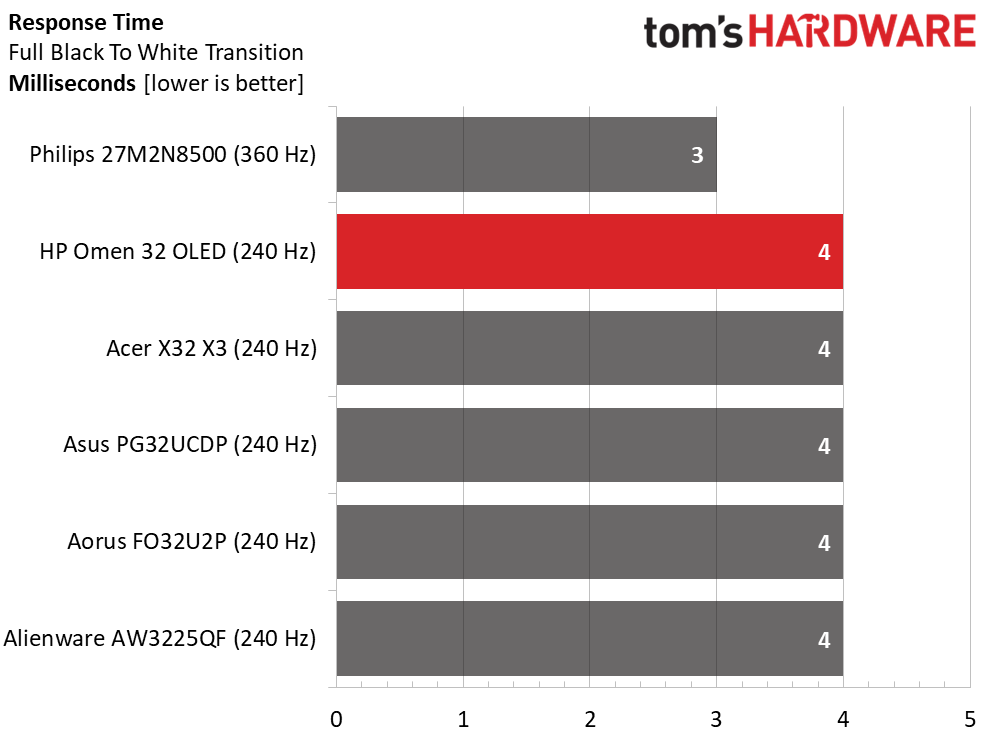
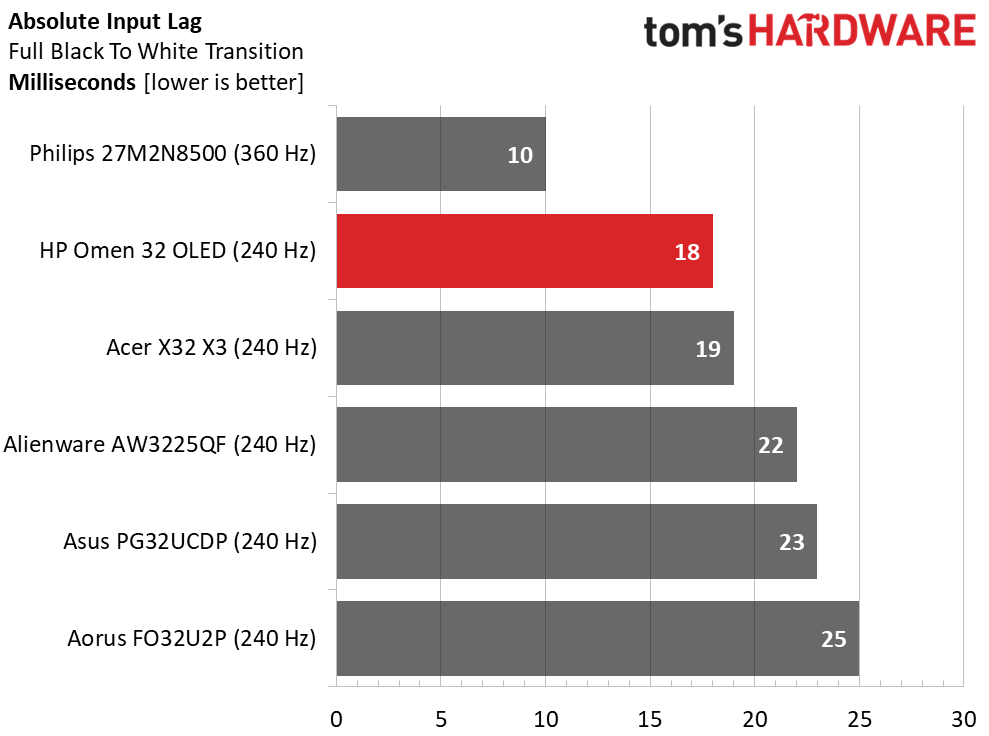
The response test shows expected results, with the 240 Hz monitors drawing a full white field in 4ms and the 360 Hz Philips doing it in 3ms. There is no visual difference in motion resolution when viewing a moving test pattern. The Blur Buster’s UFO pattern looks the same. I can easily see the little alien’s eyes, which are a single pixel.
The total lag test runs a wide range. The Philips is a special monitor, recently setting a record that I don’t expect will be broken anytime soon. 10ms is incredibly quick for any monitor. Granted, it moves fewer pixels than the 4K panels, but if you want the absolute fastest, that is the one.
The Omen 32 OLED is the best of the rest. It pips the Acer by 1ms to be the fastest 4K OLED I’ve yet seen. In terms of visual perception, I can’t truly tell the difference between the HP and the last-place Aorus. But pro gamers seeking every possible advantage will want to consider adding the Omen 32 OLED to their toolkit. It’s really fast.
Test Takeaway: If you have a top-tier video card and can run a 4K monitor past 200fps, the Omen 32 OLED is the quickest one currently available. It’s super smooth and responds instantly to all control inputs. Even if its professional side is not interesting to you, it is one of the best gaming monitors you can buy.
Viewing Angles
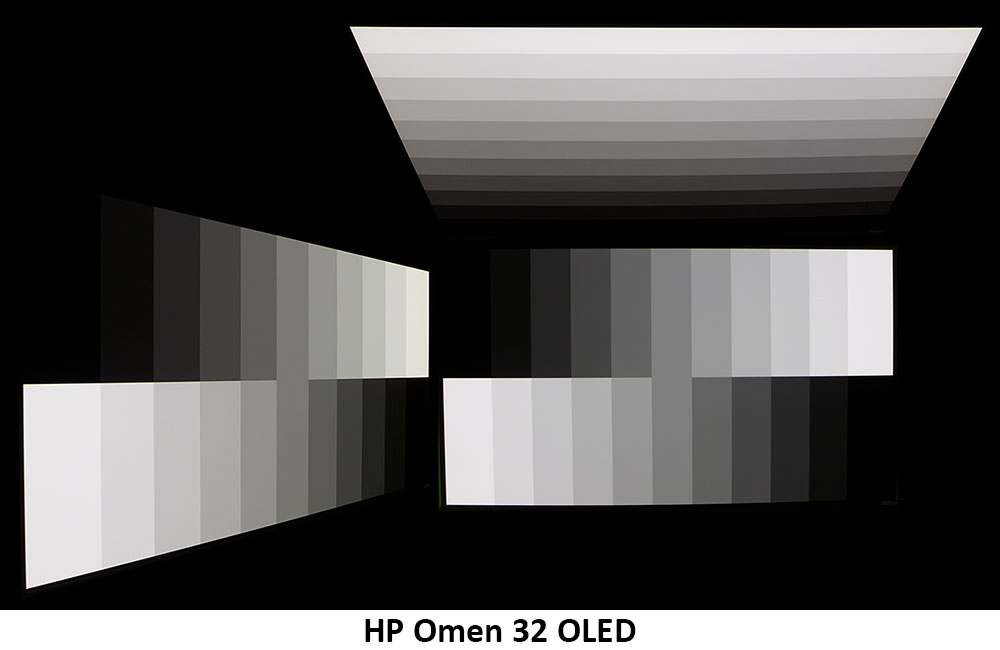
The Omen 32 OLED has nearly perfect off-axis image quality. The side view is a touch warmer in tone, but you can only see that in a test pattern like the one above. Color images don’t change at all when moving from center to 45 degrees off. The top view has slightly lower gamma and brightness with a red tint. Overall, this is excellent performance.
Get Tom's Hardware's best news and in-depth reviews, straight to your inbox.
Screen Uniformity
To learn how we measure screen uniformity, click here.
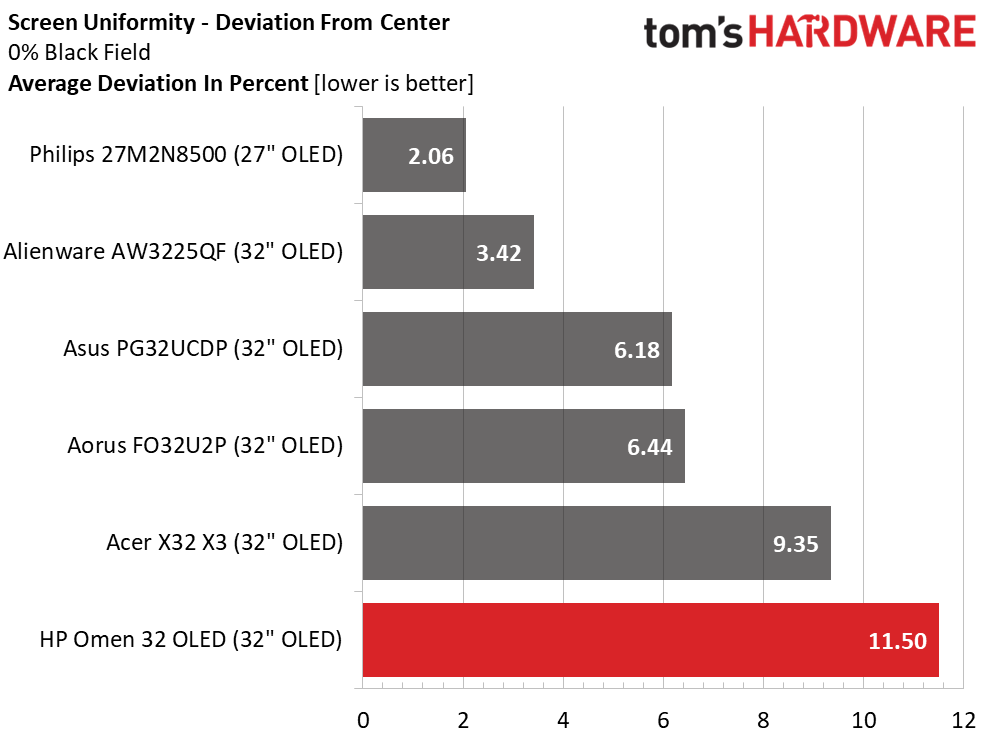
I was a bit surprised by the Omen 32 OLED’s uniformity test result. Since I measure 10% fields for OLED reviews, it’s a little harder to see flaws, but my meter showed that the right side of the panel was a tad brighter than the left. I could not see this with the naked eye. Content looked fine, with uniform color and tone throughout.
MORE: Best Gaming Monitors
MORE: How We Test PC Monitors
MORE: How to Buy a PC Monitor
Current page: Response, Input Lag, Viewing Angles and Uniformity
Prev Page Features and Specifications Next Page Brightness and Contrast
Christian Eberle is a Contributing Editor for Tom's Hardware US. He's a veteran reviewer of A/V equipment, specializing in monitors. Christian began his obsession with tech when he built his first PC in 1991, a 286 running DOS 3.0 at a blazing 12MHz. In 2006, he undertook training from the Imaging Science Foundation in video calibration and testing and thus started a passion for precise imaging that persists to this day. He is also a professional musician with a degree from the New England Conservatory as a classical bassoonist which he used to good effect as a performer with the West Point Army Band from 1987 to 2013. He enjoys watching movies and listening to high-end audio in his custom-built home theater and can be seen riding trails near his home on a race-ready ICE VTX recumbent trike. Christian enjoys the endless summer in Florida where he lives with his wife and Chihuahua and plays with orchestras around the state.
-
JayGau I find this review quite misleading. It says the monitor has basically no flaws, gives it a perfect score, but when you look at the tests it sits at the bottom of almost every chart. To me it rather sounds like it's a good gaming monitor combined with a good pro monitor, but it's not excellent in either. Like if you need both kind of monitors, this is an absolute no-brainer, but if you only need a gaming monitor or only a pro monitor there are better options.Reply -
UnforcedERROR Reply
It's UHB10 DP 2.1, which isn't really anything worth getting excited about. You'd still have DSC, and even if it was UHBR20 you'd still only avoid DSC if you had a 5000 series from Nvidia.truerock said:The article says DP 1.4
I think it has DP 2.1 -
truerock Reply
Thank you... I need to keep remembering to check for that.UnforcedERROR said:It's UHB10 DP 2.1, which isn't really anything worth getting excited about. You'd still have DSC, and even if it was UHBR20 you'd still only avoid DSC if you had a 5000 series from Nvidia.
I do plan to buy a Nvidia GeForce RTX 5090 this year. So, I am looking for DP 2.1 UHBR20 video monitors.
